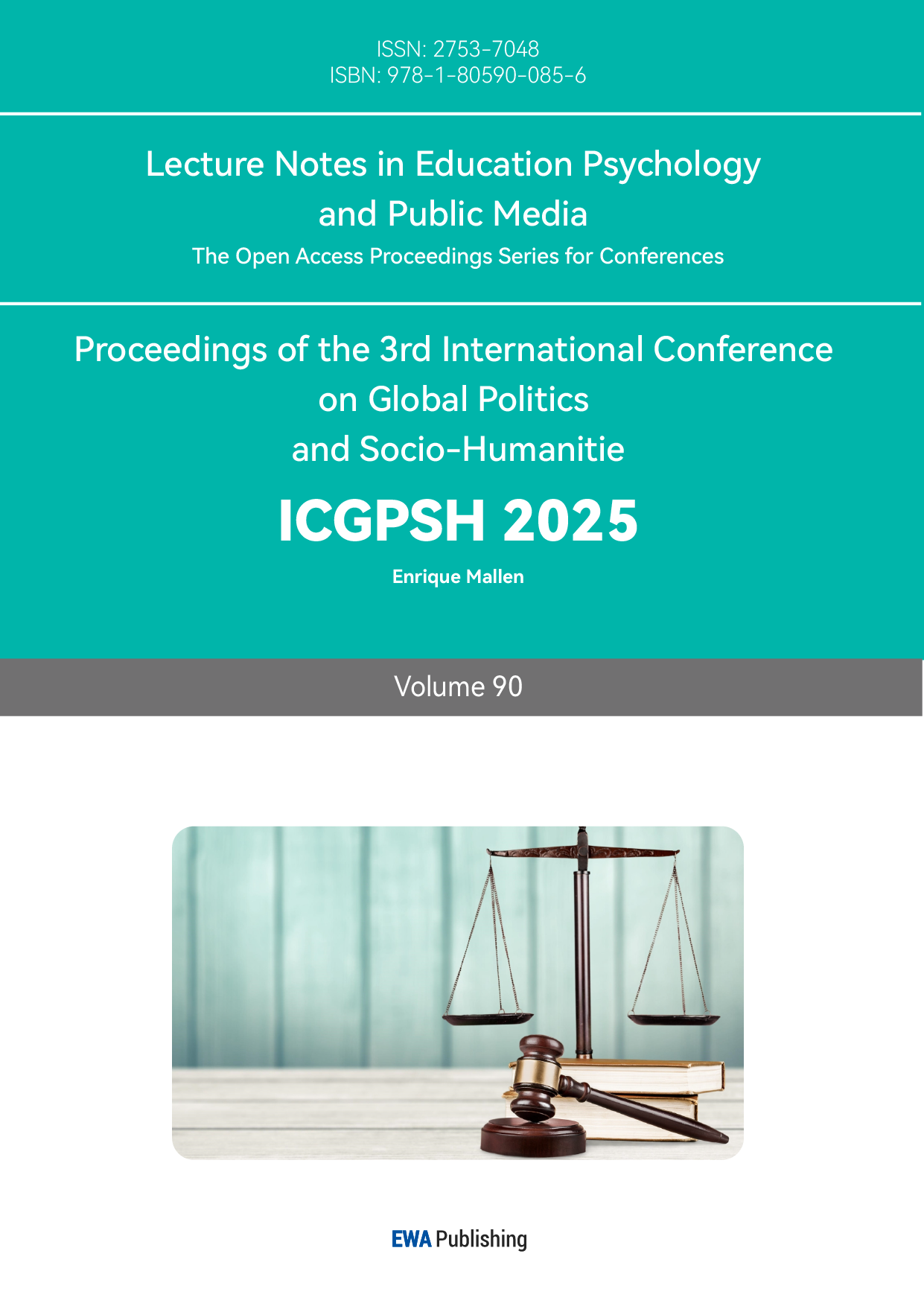References
[1]. Tao Ran. The Attribution of Liability for Copyright Infringement in AI-Generated Works[J]. Journal of Taiyuan Normal University (Social Science Edition), 2025, 24(01):7-16.
[2]. Chen Zengbao. Regulation of Generative Artificial Intelligence by Copyright Law—Reflection on the Copyrightability and Infringement Risk Management[J]. Digital Law, 2023, (06):24-28.
[3]. Fan Xinghui. Risks and Solutions of Copyright Infringement in Artificial Intelligencegenerated Creations[J]. Henan Science and Technology, 2024, 51(24):105-108.
[4]. Wang Jingyu. Legal Mechanism of Multiple Interests Equity[J], Citizen and Law (Law Edition), 2023, 15(4): 45-58.
[5]. Zhang Wei. AI Sparks Copyright Disputes: Legal Policies Urgently Needed for Guidance [N]. Legal Daily, 2025-01-17(007).
[6]. Jia Man. Research on Copyright Infringement Issues in AI-Generated Artworks [J]. Communication and Copyright, 2023, (11): 121–124.
Cite this article
Ma,W. (2025). The Controversy of AI-Generated Technology in Artistic Creation. Lecture Notes in Education Psychology and Public Media,90,84-88.
Data availability
The datasets used and/or analyzed during the current study will be available from the authors upon reasonable request.
Disclaimer/Publisher's Note
The statements, opinions and data contained in all publications are solely those of the individual author(s) and contributor(s) and not of EWA Publishing and/or the editor(s). EWA Publishing and/or the editor(s) disclaim responsibility for any injury to people or property resulting from any ideas, methods, instructions or products referred to in the content.
About volume
Volume title: Proceedings of the 3rd International Conference on Global Politics and Socio-Humanities
© 2024 by the author(s). Licensee EWA Publishing, Oxford, UK. This article is an open access article distributed under the terms and
conditions of the Creative Commons Attribution (CC BY) license. Authors who
publish this series agree to the following terms:
1. Authors retain copyright and grant the series right of first publication with the work simultaneously licensed under a Creative Commons
Attribution License that allows others to share the work with an acknowledgment of the work's authorship and initial publication in this
series.
2. Authors are able to enter into separate, additional contractual arrangements for the non-exclusive distribution of the series's published
version of the work (e.g., post it to an institutional repository or publish it in a book), with an acknowledgment of its initial
publication in this series.
3. Authors are permitted and encouraged to post their work online (e.g., in institutional repositories or on their website) prior to and
during the submission process, as it can lead to productive exchanges, as well as earlier and greater citation of published work (See
Open access policy for details).
References
[1]. Tao Ran. The Attribution of Liability for Copyright Infringement in AI-Generated Works[J]. Journal of Taiyuan Normal University (Social Science Edition), 2025, 24(01):7-16.
[2]. Chen Zengbao. Regulation of Generative Artificial Intelligence by Copyright Law—Reflection on the Copyrightability and Infringement Risk Management[J]. Digital Law, 2023, (06):24-28.
[3]. Fan Xinghui. Risks and Solutions of Copyright Infringement in Artificial Intelligencegenerated Creations[J]. Henan Science and Technology, 2024, 51(24):105-108.
[4]. Wang Jingyu. Legal Mechanism of Multiple Interests Equity[J], Citizen and Law (Law Edition), 2023, 15(4): 45-58.
[5]. Zhang Wei. AI Sparks Copyright Disputes: Legal Policies Urgently Needed for Guidance [N]. Legal Daily, 2025-01-17(007).
[6]. Jia Man. Research on Copyright Infringement Issues in AI-Generated Artworks [J]. Communication and Copyright, 2023, (11): 121–124.









